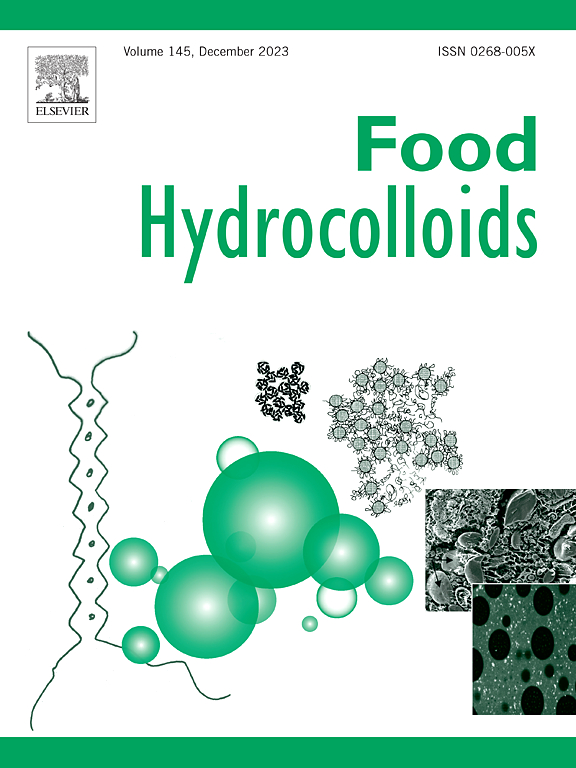Barrier properties characterization and release kinetics study of citrus fibers-reinforced functional starch composites
IF 11
1区 农林科学
Q1 CHEMISTRY, APPLIED
引用次数: 0
Abstract
Poor barrier properties and functions have limited the application of starch film in the food industry. This work aimed to explore the effect of different citrus fibers on the starch composite's barrier properties and polyphenols' release kinetics. The pectin and polyphenol contents of the native citrus fiber were 25.58% and 16.63 mg GAE/g, respectively, which were reduced by pectin extraction procedures. Microrheology analysis showed that the incorporation of citrus fibers, especially the 1-grade extracted fiber, improved the viscoelasticity and network structure of the starch aqueous system during film formation. As a result, the microstructures of the developed starch composite were modified, as supported by the compact cross-section structures without cracks, reduced water activity, and increased hydrogen bonding energy (19.13 kJ/mol) revealed by SEM, LF-NMR, and FTIR. Release studies showed that the active films exhibited controlled polyphenol release for up to 24 h in food systems. The release kinetics were well-fitted by Fick diffusion and Peleg models. The barrier properties of the starch composites were improved with citrus fibers, as evidenced by the reduced water vapor permeability (to 3.46 × 10−10 g m−1·s−1·Pa−1), increased anti-ultraviolet property (to 99.29%), and improved tensile strength (to 8.52 MPa). These enhancements were owing to the improved microstructure of the material, and the inherent strength, UV blocking, and physical barrier properties of citrus fiber. This study provided a theoretical basis for the development of a high-performance active starch composite with citrus fibers for food preservation.

求助全文
约1分钟内获得全文
求助全文
来源期刊

Food Hydrocolloids
工程技术-食品科技
CiteScore
19.90
自引率
14.00%
发文量
871
审稿时长
37 days
期刊介绍:
Food Hydrocolloids publishes original and innovative research focused on the characterization, functional properties, and applications of hydrocolloid materials used in food products. These hydrocolloids, defined as polysaccharides and proteins of commercial importance, are added to control aspects such as texture, stability, rheology, and sensory properties. The research's primary emphasis should be on the hydrocolloids themselves, with thorough descriptions of their source, nature, and physicochemical characteristics. Manuscripts are expected to clearly outline specific aims and objectives, include a fundamental discussion of research findings at the molecular level, and address the significance of the results. Studies on hydrocolloids in complex formulations should concentrate on their overall properties and mechanisms of action, while simple formulation development studies may not be considered for publication.
The main areas of interest are:
-Chemical and physicochemical characterisation
Thermal properties including glass transitions and conformational changes-
Rheological properties including viscosity, viscoelastic properties and gelation behaviour-
The influence on organoleptic properties-
Interfacial properties including stabilisation of dispersions, emulsions and foams-
Film forming properties with application to edible films and active packaging-
Encapsulation and controlled release of active compounds-
The influence on health including their role as dietary fibre-
Manipulation of hydrocolloid structure and functionality through chemical, biochemical and physical processes-
New hydrocolloids and hydrocolloid sources of commercial potential.
The Journal also publishes Review articles that provide an overview of the latest developments in topics of specific interest to researchers in this field of activity.
 求助内容:
求助内容: 应助结果提醒方式:
应助结果提醒方式:


